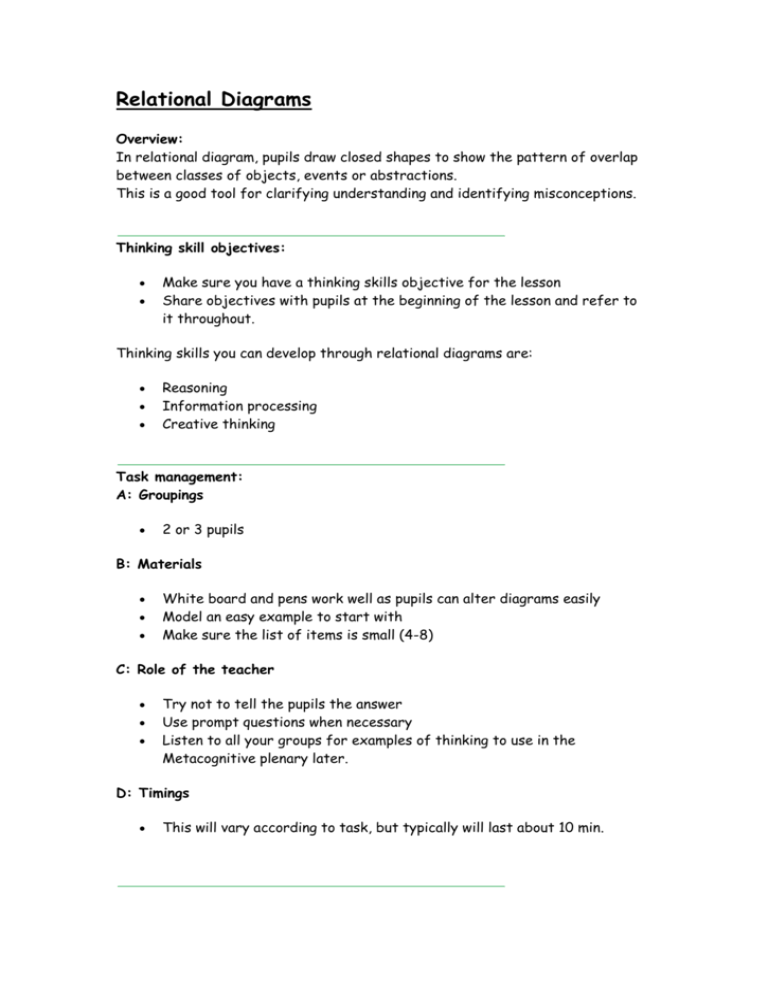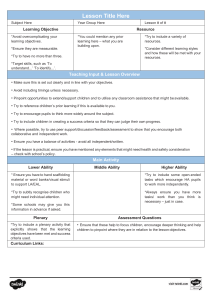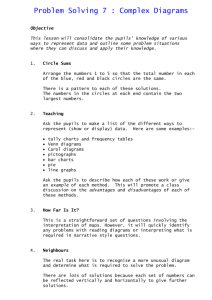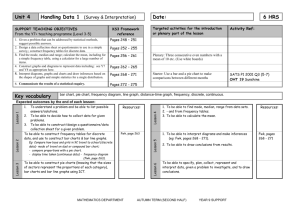Relational Diagrams
advertisement

Relational Diagrams Overview: In relational diagram, pupils draw closed shapes to show the pattern of overlap between classes of objects, events or abstractions. This is a good tool for clarifying understanding and identifying misconceptions. Thinking skill objectives: Make sure you have a thinking skills objective for the lesson Share objectives with pupils at the beginning of the lesson and refer to it throughout. Thinking skills you can develop through relational diagrams are: Reasoning Information processing Creative thinking Task management: A: Groupings 2 or 3 pupils B: Materials White board and pens work well as pupils can alter diagrams easily Model an easy example to start with Make sure the list of items is small (4-8) C: Role of the teacher Try not to tell the pupils the answer Use prompt questions when necessary Listen to all your groups for examples of thinking to use in the Metacognitive plenary later. D: Timings This will vary according to task, but typically will last about 10 min. Metacognitive plenary: In the Metacognitive plenary you need to include questions like: How did you start? What did you do next? What did you find difficult? Can you see a use of this elsewhere (in school/out of school)?



![afl_mat[1]](http://s2.studylib.net/store/data/005387843_1-8371eaaba182de7da429cb4369cd28fc-300x300.png)







